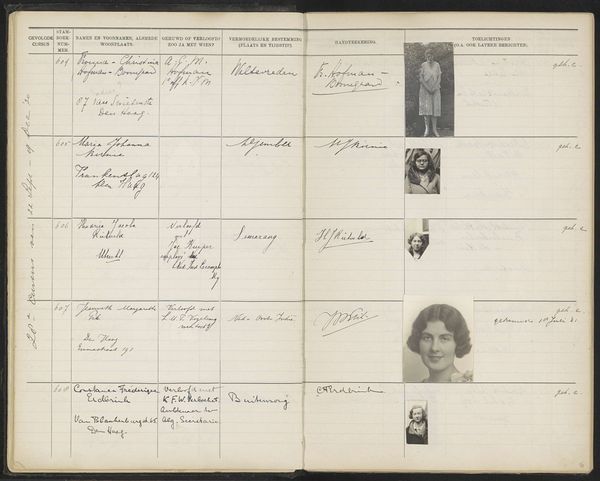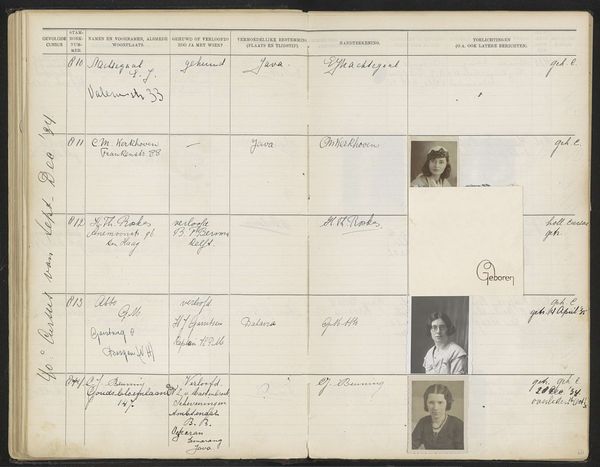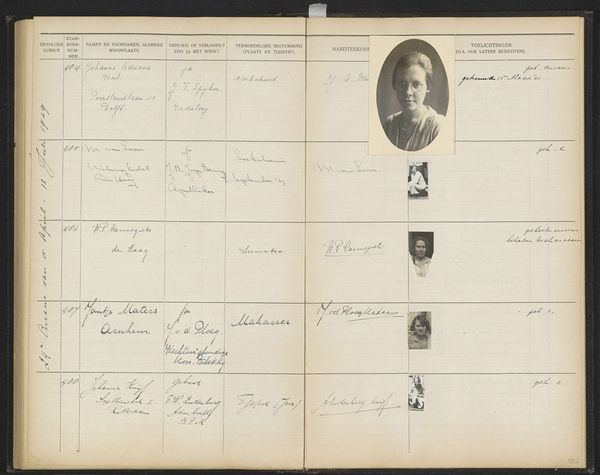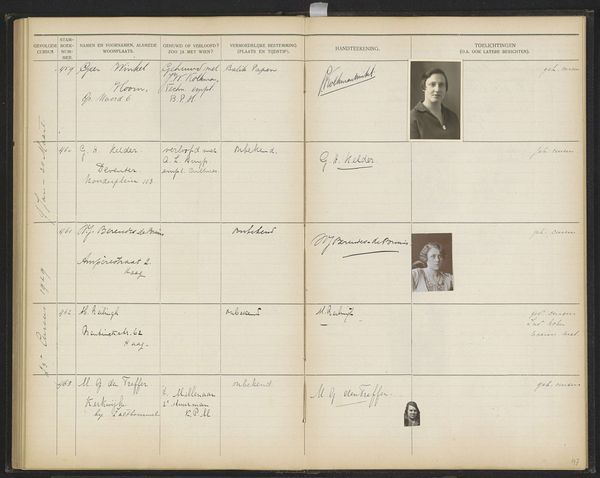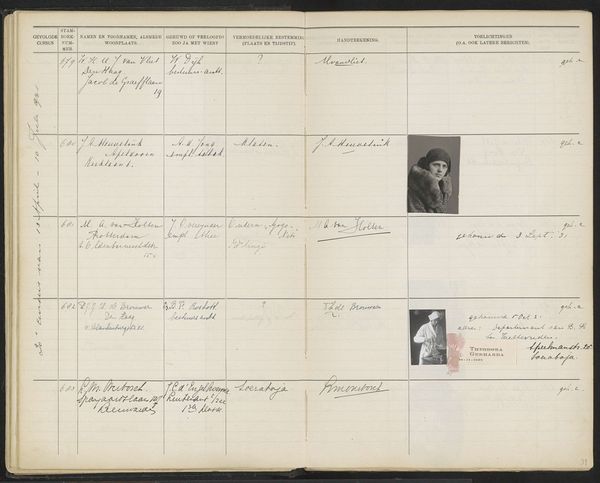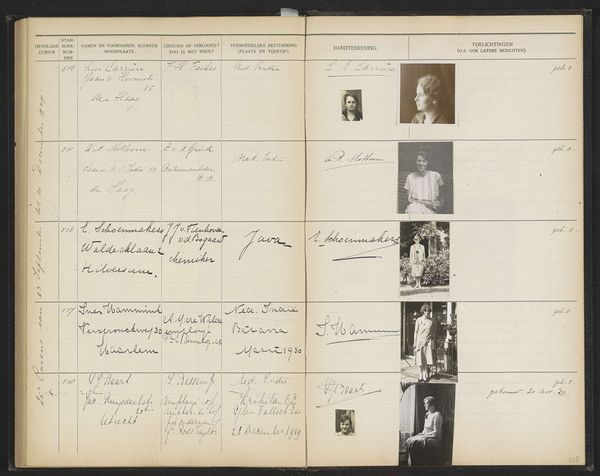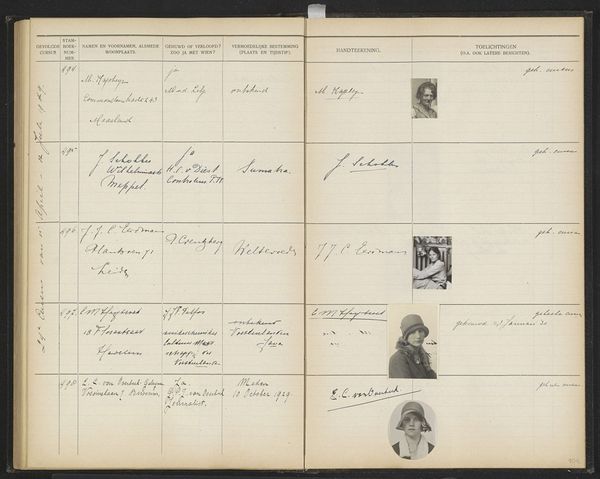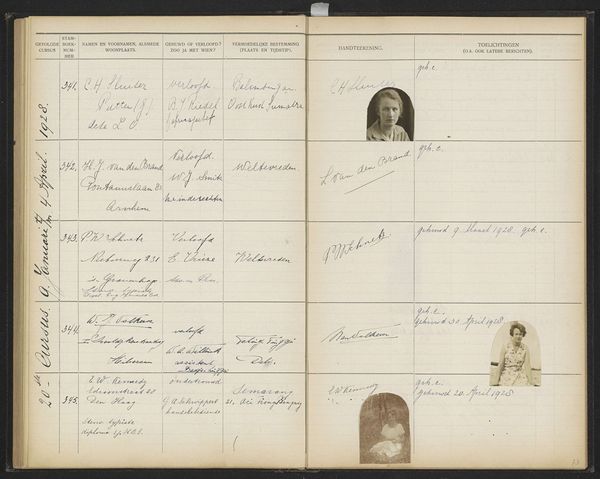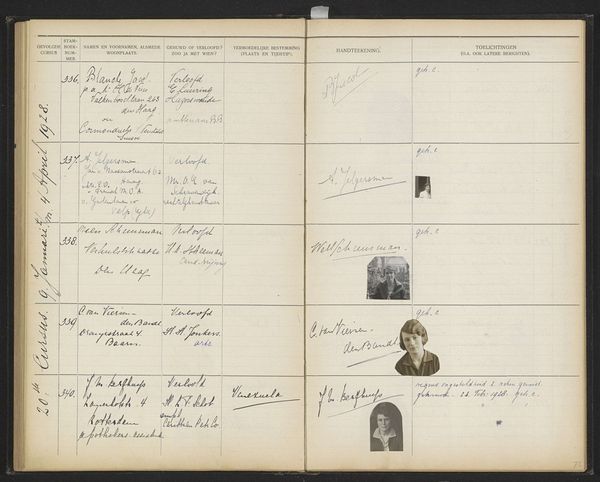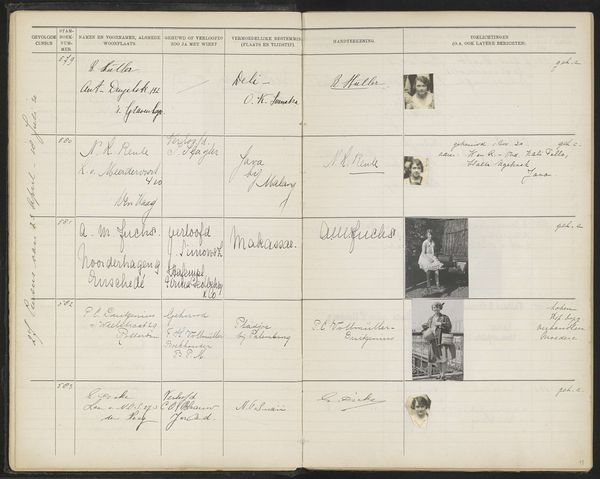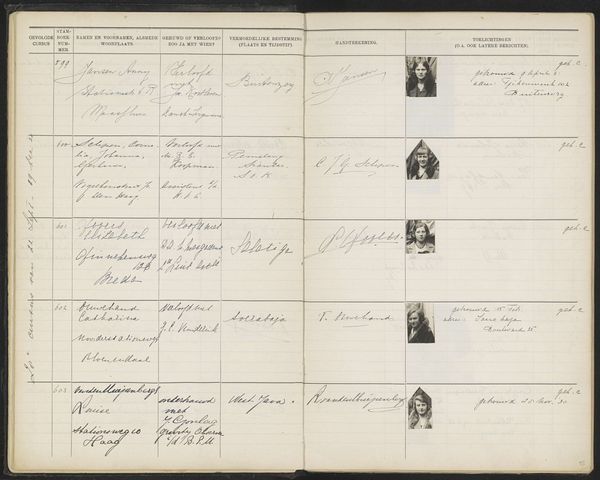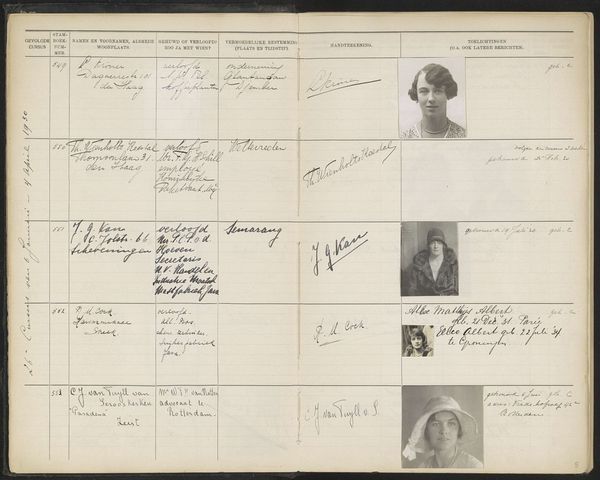
Blad 20 uit Stamboek van de leerlingen der Koloniale School voor Meisjes en Vrouwen te 's-Gravenhage deel I (1921-1929) Possibly 1923 - 1929
0:00
0:00
drawing, paper, photography, ink
#
portrait
#
drawing
#
aged paper
#
hand drawn type
#
paper
#
photography
#
ink
#
fading type
#
thick font
#
handwritten font
#
academic-art
Dimensions: height 340 mm, width 440 mm
Copyright: Rijks Museum: Open Domain
Editor: Here we have a page, likely from between 1923 and 1929, plucked from "Stamboek van de leerlingen der Koloniale School voor Meisjes en Vrouwen te 's-Gravenhage," or the Register of Students from the Colonial School for Girls and Women in The Hague. It uses ink, photography, and what appears to be drawing on paper. There’s something haunting about these rows of names, notes, and tiny portraits. What historical echoes do you hear when you look at this? Curator: I hear echoes of ambition, opportunity, and, inevitably, a touch of the unsettling colonial project itself. The women documented here attended a school meant to train them for lives intertwined with the Dutch colonies. The images and handwritten text are laden with cultural weight, symbolizing aspirations both personal and national. Editor: How so? I see just names, places of origin… it seems pretty straightforward. Curator: Look closer at the visual language. The formal portraiture, the meticulous script—they speak of order and control, reflecting the colonial administration's desire to categorize and manage its subjects. Yet, each woman's portrait also holds a spark of individuality, hinting at personal narratives that defy simple categorization. What stories do these images evoke in you? Do you see their gaze looking at you, looking away, into themselves? Editor: I guess the portraits do humanize the record-keeping, turning data into individual identities… tiny but tangible. It highlights the paradox, doesn’t it? Order versus individuality, control versus aspiration. It seems poignant considering what colonial 'service' may have required of these women. Curator: Precisely. It serves as a reminder that historical documents aren't simply neutral records but are complex cultural artifacts, dense with symbols of power, memory, and the enduring human spirit. Editor: This has given me a whole new way of looking at archival images! Seeing past the simple record. Curator: Indeed! These everyday images hide powerful traces of time and its complicated effects on the way we read visual symbols.
Comments
No comments
Be the first to comment and join the conversation on the ultimate creative platform.
